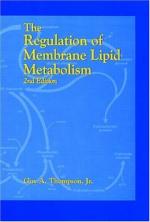|
This section contains 507 words (approx. 2 pages at 300 words per page) |

|
A lipid is a molecule that is at least partially composed of a chain of hydrocarbons--carbons in association with hydrogen molecules. Hydrocarbon chains tend to exclude water, because there are no vacant sites along the chain for the water to bind to, and are thus described as being hydrophobic (from Latin meaning, "water hating"). Lipids are important in biological systems for a number of reasons, including the synthesis of important compounds and their use in membranes.
In biological systems, there are four classes of lipids. One class consists of fatty acids, compounds that contain a hydrogen chain that ends in a carboxylate group (COOH). Fatty acids can be saturated (there are no double bonds linking the carbons in the chain) or unsaturated (there are one or more double bonds present). Unsaturated fatty acids, such as those that make up margarine, tend to...
|
This section contains 507 words (approx. 2 pages at 300 words per page) |

|


